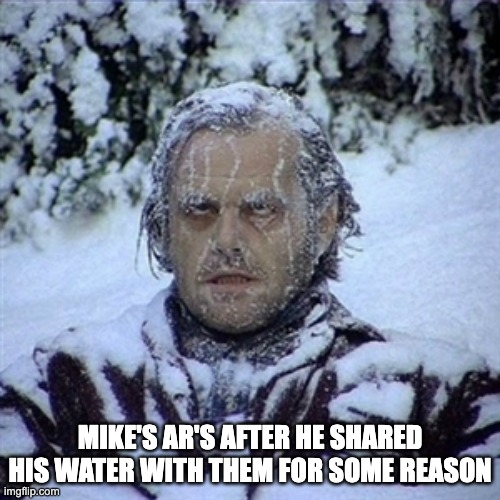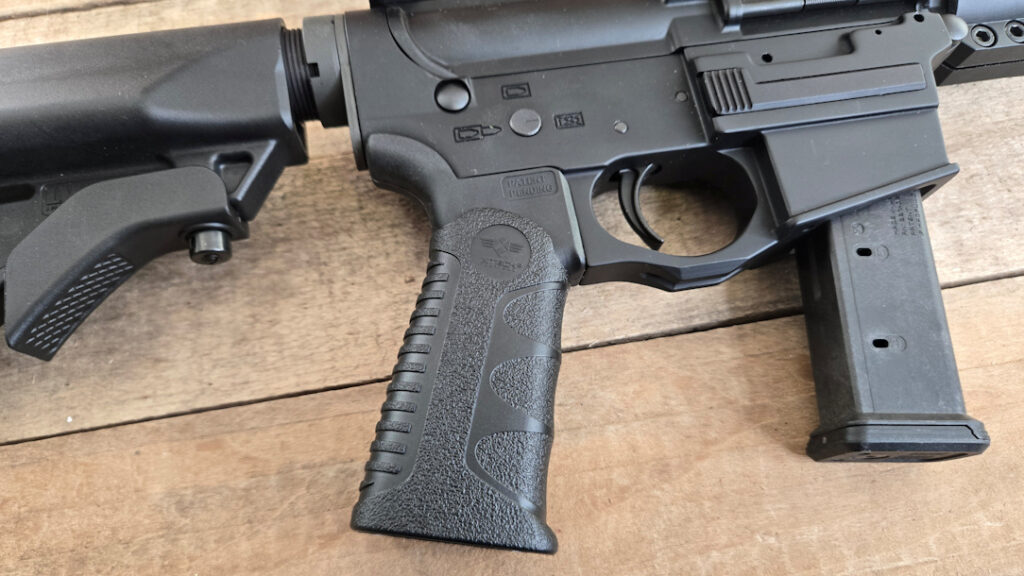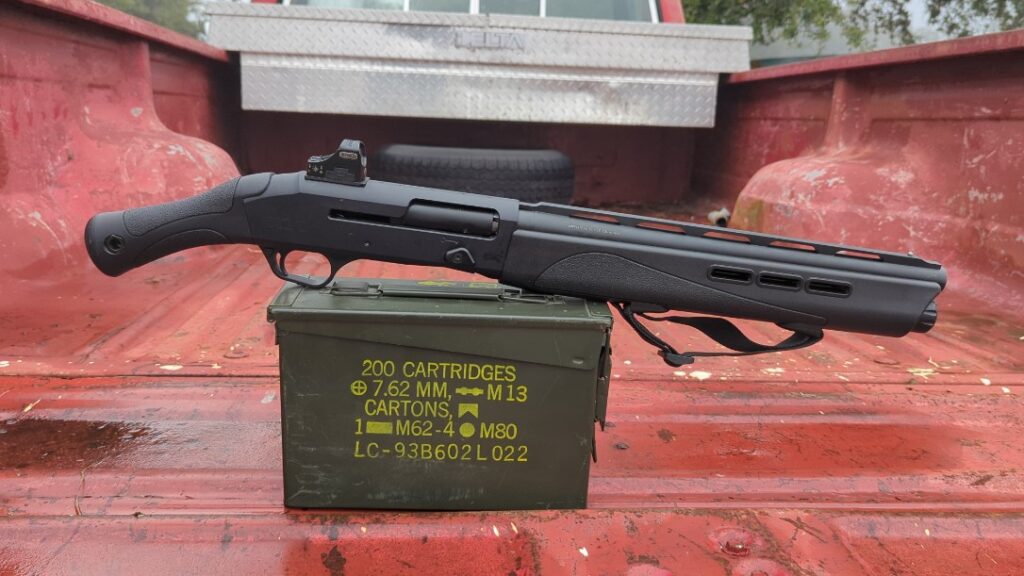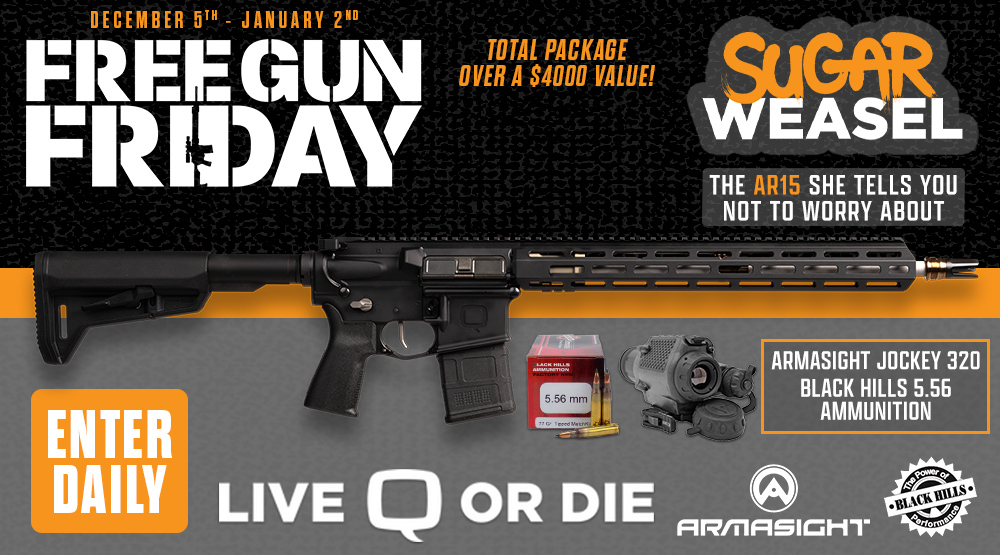The GunTube video still breaking FanBoi hearts and minds has certainly generated buzz.
But the information illustrated is actually important.
Advertisement — Continue Reading Below
Why?
Water incidents happen in the cold. You trip and fall in a creek or river, you break through the ice walking around (or even across) a lake. These things do occur in the cold, and being that it was 20 degrees this morning walking outside, I figured I would extrapolate a little from the video.
Especially the latter test, where the rifles were thoroughly soaked, most of the guns ‘failed’ the test. They were rendered inoperable as their actions or fire control was frozen beyond working. Except the AK’s, the true AK’s that is, the Galil’s controls froze up too.
Advertisement — Continue Reading Below
Comparing the light and heavy water intrusion tests, several things come to the forefront. Lets address them.
The AK’s “won”
The AK’s performed well for two observable reasons, both having to do with the safety selector design.
1.) The selector keeps the water intrusion into the action, which is already generously spacious, down to a point others (like the M1A) did not. The trigger mechanism did not freeze up and the springs provided enough force to get passed what icing occured.
Advertisement — Continue Reading Below
2.) The selector has the best leverage to push past interference from ice, and the generous space inside with the lever’s design allows it to overcome buildup that will stop less spacious designs. The AK’s safety system is big. The lever is a huge piece of stamped steel you can get much greater force upon and the internal U-block that stops the fire control’s motion spans the whole receiver body. It is big, you can leverage it, and it doesn’t have any crucial points where ice build up can easily stop it.
What happened with my favorite, the SCAR?
The interesting part for the SCAR is in the first test. Where the action was running sluggishly due to the light freezing around it. The design keeps the working parts very well sealed, however ice can freeze around the closed system and that ice needed to be worked out. For the rifle to resume working. Of all the systems tested, this one would appear to be the one most easily returned to action by working the action back to smooth motion, the reciprocating charging handle shows its utility here.
On the total failure when the rifle was totally soaked, I suspect the detent safety and significant icing on the operating rails stopped it.
Advertisement — Continue Reading Below
Detent safeties are very susceptible to moisture intrusion, and as ice freezes it expands. That expansion can lock mechanisms and the more tightly toleranced the mechanism the lower the amount of water necessary to fuse it.
Which brings me to…
The AR’s ignoble performance…
The AR’s were on the struggle bus for this test, even the light icing test had them choking up more than their counterparts.
Advertisement — Continue Reading Below
Why?
The AR has the most small spaces of the designs on the table. The actions themselves were perfectly well sealed against the water, but that didn’t kill the guns. Small receiver pockets that could more thoroughly fill with ice. Bolt catches that froze and locked actions open. Receiver extensions where the buffers could get frozen. Safety selectors full of small crevices that can fill with water that lock as it expands to ice. Even the dust cover being unable to open because they were frozen over without enough clearance.
One of the AR’s strengths is its easy tight tolerancing. That becomes a weakness here as it takes less uninterrupted ice formation to freeze out the AR.
Advertisement — Continue Reading Below
The Caveat
Why doesn’t this invalidate your rifle choice, even if your rifle failed?
The largest artificiality of the whole test is the assumption that you are not doing anything to mitigate the unexpected bath your gun just took. You are assumed to not be shaking the rifle off, working the safety, or working the action to keep them from freezing.
Just like if you were to take a sudden and very cold plunge, you absolutely should take mitigating steps to take care of yourself if you get wet in the cold and if your primary defensive tool gets wet in the cold. This can include periodically working the action to clear the forming ice/slush, working the safety, and dry firing/function checking the weapon. Does this take the gun ‘out of action’? Yes, but that is unavoidable. The gun frozen is even more out of action than it is unloaded but functional.
Advertisement — Continue Reading Below
The Point
The point is you must, yes even with AKs because we know those can be stopped too, take remedial actions if your rifle takes a dive. That is your ultimate takeaway. Work the action, work the safety, make certain the moving parts stay moving.















